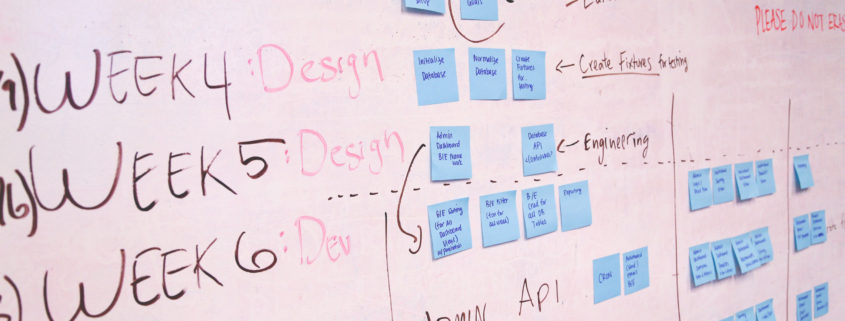From Here to There (READ THIS Before your Next Strategic Planning Session)
By Carrie Fox
It’s strategic planning season.
This month, tens of thousands of organizations will start their strategic planning process for the year(s) to come. And according to Inc. Magazine, more than 50% of those organizations will find the entire process futile. (Ouch.)
Some of the questions that lead to this strategy-on-a-shelf syndrome: “We built a plan that was too big for us”, “We didn’t take into account the true capacity of our team” or “We didn’t spend enough time thinking about why we do this work or for whom we’re doing it.”
Here at Mission Partners, we’re currently counseling a number of organizations through the process, all from their own unique positions. There are some organizations planning for the launch of new products, some experiencing leadership transitions, and others working to redefining who they are, in order to better get at how they deliver on their promise. The request in all cases is nearly identical: “Help us get from here to there.”
As we guide each organization through the strategic planning process over the coming months, making sure they ultimately have a strategy that sticks (our promise), we’ll ask a whole series of probing questions, some of which we share here in case you’re entering the season of strategic planning, too:
- What Are We Solving For? Can you answer this one in a way that would compel your customers to act? Don’t shortchange the process of understanding and articulating why your organization matters, and what it’s working to achieve. As much as you think someone will support your cause, join your group, or sign up for your new course because you’ve got a great idea, you must be prepared with proof that your idea is a real and relevant one. (And that means wrestling with how you’re measuring your impact on the issue too.)
- What Do We Stand For? Surprisingly, most people have a much easier time answering “what are you against?” even though the answer to the first question is at the heart of your organization’s purpose and values. Once the answer is identified, and consensus among the team is reached, other business decisions start to fall more naturally into place.
- Who’s Our Most Important Customer? One of Peter Drucker’s signature questions. As Drucker saw it, you’ve got primary customers (those whose life is changed because of your work) and secondary customers (those who must be satisfied for your organization to achieve results.) If you want your plan to stick, take the time to understand your customer base, and build a plan from their point of view. And never, never underestimate the importance of engaging your end user in the planning process before you even think about plotting strategy.
- Where Do Others See Our Value? Do you know what your primary customer would say if you asked them to define your value? Strategic planning can’t happen in a vacuum, regardless of how well you think you know answers to the questions above. Talk with enough people at least one step removed from your organization to find out how they describe your organization and its impact, and to uncover possible weaknesses or threats in your model. You’ll likely find that their answers contain some of the most crisp and compelling elements of your work, in a way that only an outside perspective can see.
As my great friend Cristin Dorgelo likes to say, “if you don’t have a target, you’ll miss it every time.” Strategic planning requires a fierce commitment to focus, and a collective understanding and commitment to the end goal. Start there–at the end of the process–and figuring out where you go from here will become much easier.
Looking for help with your strategic planning process? Email me at [email protected] to learn more about our strategic planning and facilitation services.




 Check out our new
Check out our new